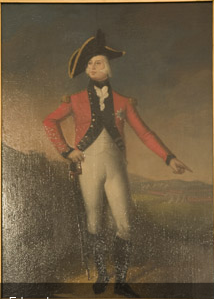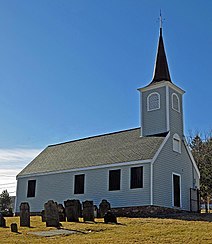
Events from the year 1816 in Canada.

Province House in Halifax is where the Nova Scotia legislative assembly, known officially as the Nova Scotia House of Assembly, has met every year since 1819, making it the longest serving legislative building in Canada. The building is Canada's oldest house of government. Standing three storeys tall, the structure is considered one of the finest examples of Palladian architecture in North America.

The Art Gallery of Nova Scotia is the provincial art gallery of Nova Scotia. It is located in downtown Halifax, Nova Scotia, Canada with a branch gallery in Yarmouth, Nova Scotia. The Art Gallery of Nova Scotia is the largest art museum in Atlantic Canada.
Sir Edward Kenny, was a Canadian politician and businessman. He co-founded the Union and Merchants' banks and served as Mayor of Halifax. He was a Conservative senator from 1867 to 1876.

St. Paul's Church is an evangelical Anglican church in downtown Halifax, Nova Scotia, within the Diocese of Nova Scotia and Prince Edward Island of the Anglican Church of Canada. It is located at the south end of the Grand Parade, an open square in downtown Halifax with Halifax City Hall at the northern end. Built during Father Le Loutre's War, it is the oldest surviving Protestant church in Canada and the oldest building in Halifax. There is also a crypt below the church. Close to the church is the St. Paul's Church Cemetery. The official chapel of the church was the Little Dutch (Deutsch) Church.

The Old Burying Ground is a historic cemetery in Halifax, Nova Scotia, Canada. It is located at the intersection of Barrington Street and Spring Garden Road in Downtown Halifax.

Prince's Lodge is a Subdivision located on the shore of Bedford Basin between the communities of Rockingham and Bedford in the Halifax Regional Municipality Nova Scotia on the Bedford Highway.

Robie Street is a north-south artery, street and provincial road that runs for 7 kilometres within the Halifax Peninsula area of the Halifax Regional Municipality, from Memorial Drive in the North End Halifax, to Gorsebrook Avenue in the South End. The street in most places is 4 lanes wide with a centre median from Gorsebrook Ave to Cunard Street. From Cunard to Almon Streets, it is a 2-lane street.

Sir Malachy Bowes Daly was a Canadian politician and the seventh Lieutenant Governor of Nova Scotia.
The 9th General Assembly of Nova Scotia represented Nova Scotia between the election of 7 August 1806 and 1811, its membership being set in the November 1806 Nova Scotia general election.

The Naval Museum of Halifax is a Canadian Forces museum located at CFB Halifax in the former official residence of the Commander-in-Chief of the North America Station (1819–1905). Also known as the "Admiralty House", the residence is a National Historic Site of Canada located in Halifax, Nova Scotia, Canada. The museum collects, preserves and displays the artifacts and history of the Royal Canadian Navy.

The Sebastopol Monument is a triumphal arch that is located in the Old Burial Ground, Halifax, Nova Scotia, Canada. The arch commemorates the Siege of Sevastopol (1854–1855), which is one of the classic sieges of all time. This arch is the 4th oldest war monument in Canada (1860). It is the only monument to the Crimean War in North America. The arch and lion were built in 1860 by stone sculptor George Lang to commemorate British victory in the Crimean war and the Nova Scotians who had fought in the war.

The Prince of Wales Tower is the oldest martello tower in North America and is located in Point Pleasant Park, Halifax Regional Municipality, Nova Scotia, Canada. It was built in 1796 by Captain James Straton and was used as a redoubt and a powder magazine. Restored, it was designated a National Historic Site of Canada in 1943.

Little Dutch (Deutsch) Church is the second oldest building in Halifax, Nova Scotia after St. Paul's and was built for the Foreign Protestants.

Cambridge Military Library is a public library building in Royal Artillery Park (Halifax) in Halifax, Nova Scotia, Canada which was created in 1886. The building was created to house the garrison library collection, which had been moved from various locations in the city since its creation in 1817. It is the oldest library collection in Atlantic Canada. This building was the social and literary centre of military Halifax. In 1902, the officers of the garrison requested the library be named after the Prince George, Duke of Cambridge.
































